I took Hooman Majd’s book, The Ayatollah begs to differ, to bed and before I knew it, it was five in the morning! I was moved to tears and laughter by this affectionate account of his trips to Iran.
I recommend it to Iranians especially if they have been living outside their country for a long time like me (30 years) . It will be interesting to non-Persians as well to glimpse the enigma of today’s Iran. Majd surprised me page after page with his acute observations and sharp insights into Shiite Iran’s psyche.
I learned about him first thanks to Jon Stewart’s interview on the Daily ShowI was happy to see his book make the best book list of 2008 on the Economist and L.A. Times.
I am wondering how this American Iranian grandson of an Ayatollah, who’s served as the interpreter to two Iranian presidents (Ahmadinejad and Khatami), can go back and forth between his two countries after writing such a naked account of his visits to Iran.
It would have been good to see some of Newsha Tavakolian’s amazing pictures accompany his book—they epitomize the “Iranian Paradox”.
What I really appreciated about this book is Majd’s quest to explain, in a simple way, the notion of Shiite Islam to the uninitiated (self flagellation et al…). Vali Nasr has already talked at length about the subject in The Shia Revival, as well as the super hip Reza Aslan, the writer of No God but God but Majd’s book is an easier read and peppered with funny stories.
After Shirin Neshat‘s images of Rozeh (Majd calls it a passion play—as in St. Matthew’s Passion—about the martyrdom of Imam Hossein), Tavakolian’s pictures are the most haunting to me. It’s interesting to see the similarities between the Iranian/Shiite religious processions and the catholic/Italian version below:
Check out Eduard de Pazzi’s beautiful images here.
The Ta’zieh is universal and this comes from the great grand daughter of an Ayatollah!
The author describes the book in his own words
Visit Hooman Majd’s website to learn more about his book.
Visit tavakolian’s website’s to see more of her rich collection.
Read Aslan’s review of The Ayatollah begs to differ in the LA Times.

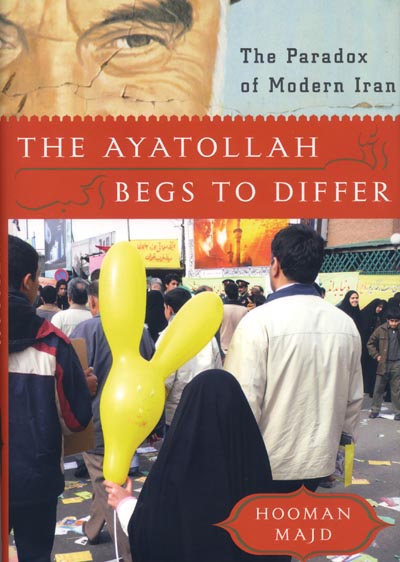

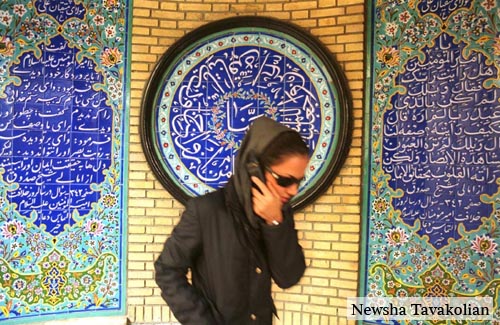
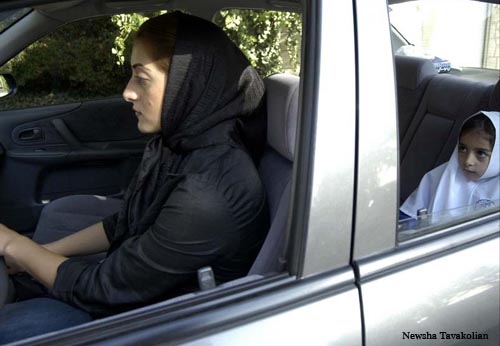
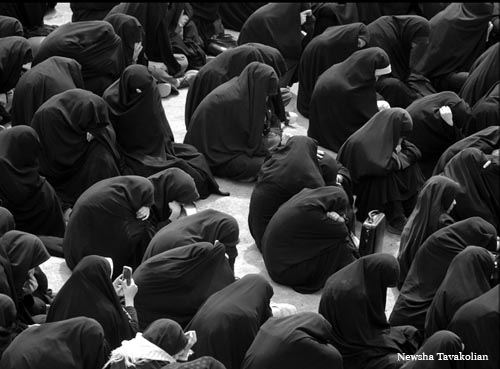
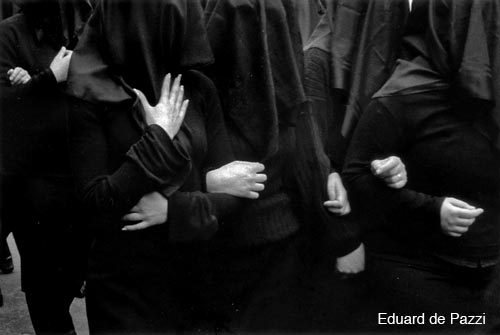
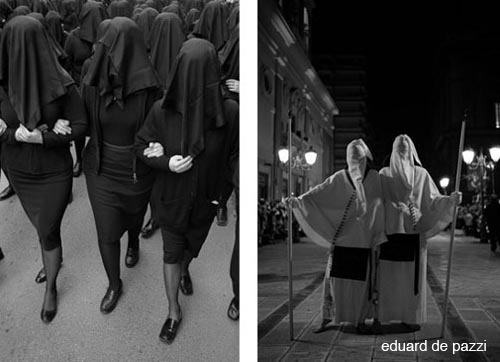
I usually keep up on the latest books on modern-day Iran but I’ve been busy and traveling a lot so I missed this one. I’ll have to read it. Michelle, you say, “I recommend it to Iranians especially if they have been living outside their country for a long time like me (30 years) . It will be interesting to non-Persians as well to glimpse the enigma of today’s Iran.” I am neither. Rather, I am an American who has been visiting Iran and traveling around the country since 1999.
What I see in Newsha Tavakolian’s images are wonderfully familiar to me as representative of Iran of the past few years. But oddly enough, images that you wouldn’t see just 10 years ago. I am a writer and photographer as well (and I often give presentations on Iran) and I revel in capturing the images (photographic and written) of the contradictions of Iran, what you call the “Iranian Paradox.” During long hours traveling in a mini-bus on my first visit to Iran in 1999 a university professor with whom I became close friends responded to my amazement with these seeming paradoxes. He raised his hands in what one might have interpreted either as a shrug or a gesture to Allah and said, “Iran, the land of contradictions!”
The opening paragraph of an article I began (never published) about these seeming contradictions describes my reaction to an ordinary scene we passed on the drive to Tehran’s Mehrabad Airport from the house of a friend where I had been staying in the fashionable north Tehran district of Tajrish. I realized on one of the long flights home to the US after a month of traveling in Iran, as my mind slowly readjusted to the Western world I was approaching and began to again take the perspective of a Westerner, that this common scene and my reaction to it was an analogy for modern Iran. I pulled out my laptop to record these thoughts:
The woman walked through the narrow alley as our car approached, a black chador flowing gracefully from her head to the ground. An older woman, I assumed, who favored the chador, the traditional one-piece covering, over the modern coat and scarf. But as we drew nearer the woman turned and the face I saw framed snugly in smooth, black cloth was that of a young woman. Books in hand, she was on her way to high school classes or perhaps university. My surprise quickly faded as we sped past. Many Iranian women of all ages favor the chador. It can be quickly draped over the latest fashions or used to cover a hastily donned, less fashionable ensemble. Within the confines of this narrow Tehran alley, lined tightly by painted brick walls, the chador seemed at first a symbol of traditional Iran. But the young face and school books are the face of modern Iran. Such superficial contrasts and seeming contradictions coexist with a harmonious convergence of old and new that is the foundation of modern-day Iran. These contrasts can also become the root of dissension and conflict.
It’s these contrasts (they no longer seem contradictions to me) are a large part of what fascinates me about Iran. I need to finish that article but I think I’ll read Majd’s book first.
Dordaneh Jan
Like always you did a great job. Very interesting subject. What a handsom writer! you always give good tips about books, music and movies to us. I shall buy this book.
I’m receiving a lot of compliments about your website from my friends and family from all over the world. I guess you can start commercializing your website and accept ads.
I’m proud to have such a talented and artistic friend.
Thanks for the recommendation Michele. I’ll definitely pick up a copy. I remember seeing him on Jon Stuart’s show too and my impression was that he was well spoken and confidant, handling Jon’s antics better than most guests. Also, he looked sharp! Not too many people since Bogart have been able to pull off the pocket square act. He succeeded! I also remember listening to Khatami’s interviews with that idiot Mike Wallace about 7 years ago. I was not impressed by neither man but found the translator remarkable! It only makes sense now! 🙂
Michelle: A very fascinating read. I will definitely read that book. After spending some time this summer in Iraq I realize 2 very important things. 1) The media in the U.S. is lopsided in its presentation of Iran and the Middle East. The news is intended to “sell and sensationalize”. So this allows extremists to manipulate the media to present only things that will do just that “sell and sensationalize”. That is why a mall shooting in the U.S. or an Iranian government official saying something ridiculous gets the head line. 2) Through the eyes of you (and other friends from Iran) it is very clear to me it is a very fascinating place. Unfortunately we only get the politically expedient view with no sense of the diversity of the country or the people. It would be the equivalent of the Middle East thinking all Americans are white and members of the Ku Klux Klan.
Your web posts are very insightful intelligent and .we need more posts such as yours. This is important, for the beauty and hope for Peace. Clarence
I liked your post. I have read Majd’s book, and I agree with you that it is an excellent book. It is certainly much better than several other books written by “experts” that present skewed images of Iran which have little relation with the Iranian society and its paradoxes. I am not a great fan of Nasr’s book. It does provide some good information and insight, but there is also a tendency to look at things in a certain way. But, Majd’s book is excellent. I also liked the images and photos that you have posted with your writing about the book.
–
MS
Michelle
It seems like a very intersting book. The photographs of Mourning Women was incredible. Also the Italian versions of Tazieh were a grrat surprise to watch.
I havealways been intrigued bythe Dichotomy of your country, which i can relate to so much, as in India, Iran or Persia has been a country with whom we have had a great exchange of Culture in variety of domains ranging form Art and Architechture to Music and Cuisine etc..
However it’s the Modern Intellectual Iran within the Ayatollah’s Iran that makes it compelling.
PLease watch the works of Reza, an iranian photographer, who resides in Paris, on http://www.webistan.com/
Nimesh
Thank you once again, Michele, for an enlightening post. In addition to the amazing photos, I particularly appreciated the YouTube clips. I learn so much from you.
Several times, during my reading, I have thought I discovered an incoherence or a mistake. But so far, each time when I reread the passages, I see that it is I who have misunderstood some of the nuances in his writing. An example of this comes when Majd writes “Iranians overthrew a twenty-five-hundred year monarchy in 1979…”. My first thought was that this wasn’t taking into account the democratic period which led to the the Mossadegh government in the early 50’s. But of course Iran was a constitutional monarchy at the time, so Majd is correct after all.